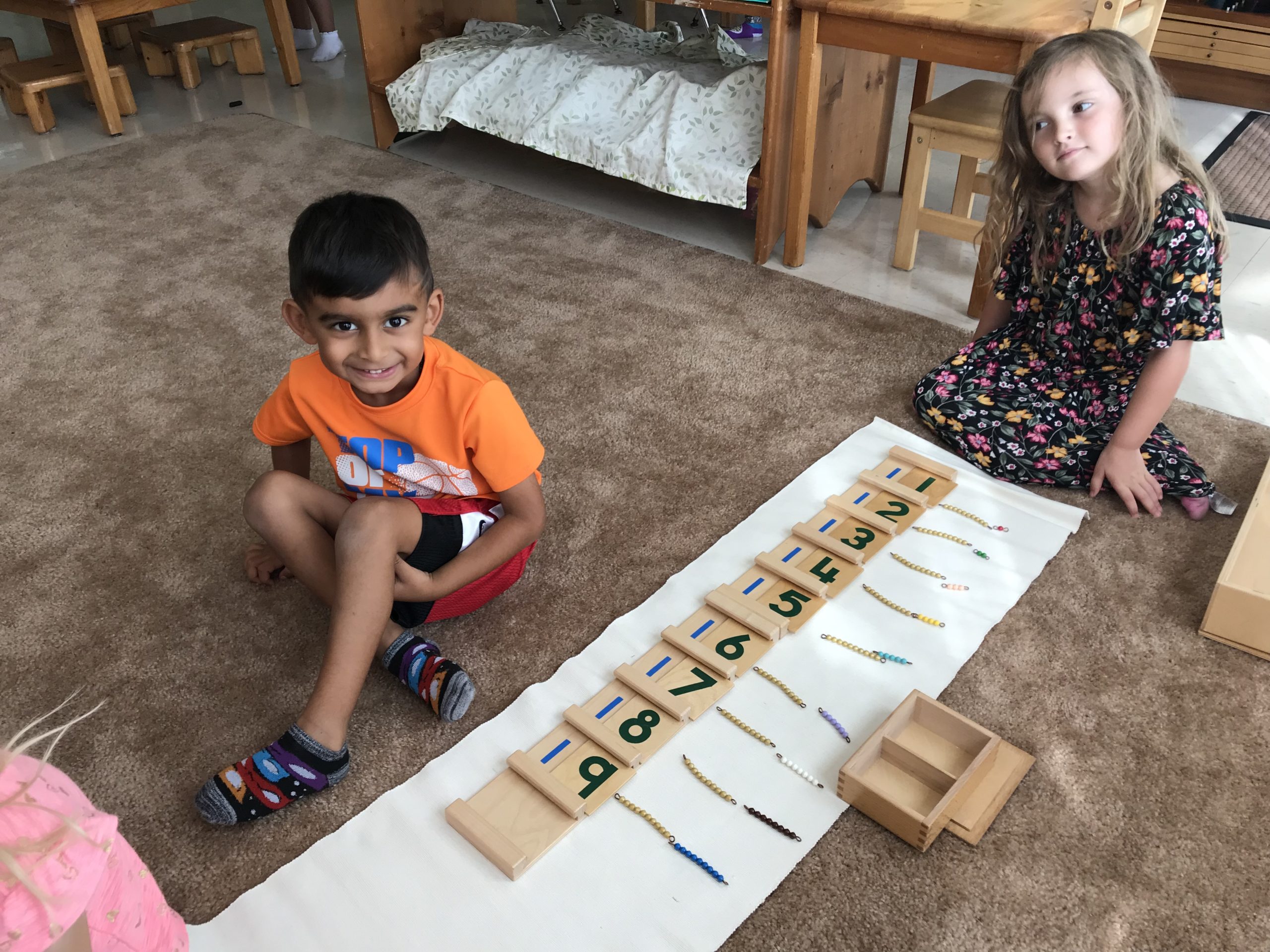
Areas of Study
Sensorial
Sensorial materials assist in the growth of a child’s perception of order and classification through the use of concrete sensory based activities. The sensorial materials serve as a key, providing attractive activities which isolate qualities so that the child may experience that quality alone, and then learn the language for it. The lessons allow for repetition and individual work as well as preparing a solid foundation for math and science.
Many early geometry concepts begin with the sensorial materials as the child works with basic shapes and names, gradation of sizes of plane figures, and types of polygons and triangles. The attachment of these attributes to the outside world helps us to see that the child has internalized these lessons and is aware of these qualities in his/her whole environment.
Practical Life
The practical life exercises include movement, grace and courtesy, care of self, and care of the environment. The exercises of practical life help your child to feel comfortable in his/her environment. Every lesson, from the simplest to the most complex has basic aims of increasing independence, promoting muscle control, lengthening attention span, and developing an orderly approach to work.
Culture
The cultural areas include science, cultural studies, geography, art, music, and movement. Particular units or areas of concentration will encompass a cross-curricular approach that might include the study of a country, its people, their music, the food, and the art work or crafts.
Mathematics
Much of the sensorial apparatus provides an indirect preparation for math. Use of these materials has provided experiences in gradation, sets of 10, and logic. The actual math materials provide concrete experiences in counting, recognition of numbers, combing symbols and quantities, the decimal system, and the four operations of addition, multiplication, subtraction, and division.
Language
Our goal is to provide each child with a solid language foundation built upon success, order, and each child’s individual needs and interests.
Everyday in our preschool and kindergarten classrooms, conversation, story time, songs and games, teach Reading Readiness. They increase a child’s vocabulary and his experience with, and love for, the spoken and written word. Sensorial exercises and games that teach skills such as matching, sorting, grading, and sequencing build upon that vocabulary and language experience, and help children to identify similarities and difference in letter shapes and sounds. Once Reading Readiness skills have been successfully mastered, progressively more difficult skills are introduced. A combination of phonic and whole language, alongside writing and a rich selection of children’s literature, provide a comprehensive, child-centered program.
Vocabulary Development and Oral Language Skills
In the Montessori class, a great deal of time is devoted to the development and enhancement of vocabulary. Your child should constantly be expanding and using his/her vocabulary skills.
Writing
Preparation for writing begins in the practical life and sensorial areas where many of the activities involve development of small motor control. Direct preparation for writing begins with pre-writing exercises such as push pin and especially metal insets. The sand paper letters allow the child to master the formation of the manuscript or cursive letters, while receiving the tactile feedback and auditory feedback of the adult forming the single sound of the letter.
Reading
The reading curriculum begins with extensive preparation for reading. These activities include matching, sequencing, and familiarity with letter sounds and names. Reading of words, sentences, and stories begins when the child is able to ‘sound out’ the letters of a word, blending them together to read the word. Learning to recognize non-phonetic words by sight is done through memory work.
